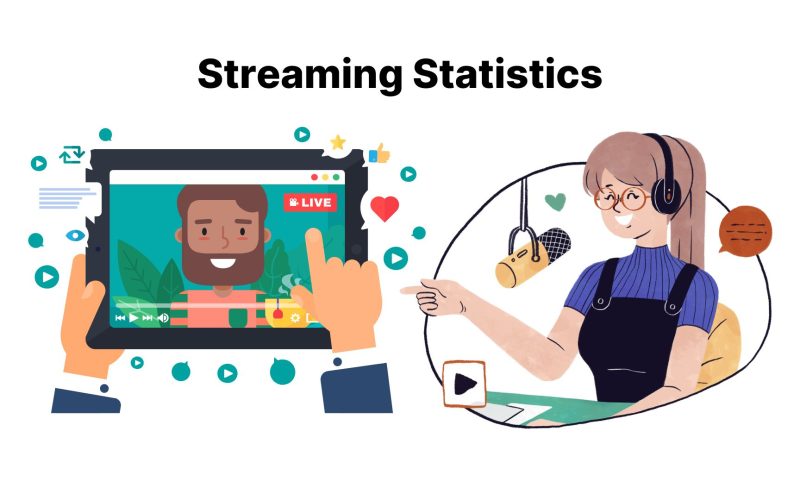In the ever-evolving world of streaming, understanding your stream stats is essential for growth and success. Whether you are a gamer, musician, or content creator, analyzing these statistics helps you make informed decisions, optimize your content, and engage with your audience more effectively. This article will guide you through the process of analyzing your stream stats effectively, ensuring you leverage data to enhance your streaming experience.
Understanding Stream Stats
Stream stats refer to the various metrics collected during your streaming sessions. These metrics can include viewer counts, engagement rates, watch time, and more. By analyzing these stats, you can gain insights into your audience’s preferences, identify trends, and measure the effectiveness of your content.
Key Metrics to Track
Before diving into the analysis, it’s crucial to understand the key metrics that matter. Here are some of the most important stream stats to keep an eye on:
- Viewership: This includes the number of concurrent viewers during your stream, total views, and unique viewers. Understanding viewership helps gauge the popularity of your content.
- Watch Time: This metric reflects the total time viewers spend watching your stream. Higher watch time often indicates engaging content.
- Engagement Rate: Engagement metrics include likes, shares, comments, and interactions during the stream. A higher engagement rate indicates that your audience is actively participating.
- Follower Growth: Tracking how many new followers you gain during or after a stream can help you understand what content attracts new viewers.
- Drop-off Rate: This metric shows when viewers leave your stream. Identifying when and why viewers drop off can help you improve content pacing and engagement strategies.
- Chat Activity: Monitoring chat activity during the stream can provide insights into viewer engagement and interests.
Step 1: Set Clear Goals
Before you start analyzing your stream stats, it’s essential to establish clear goals. What do you want to achieve with your streaming? Common goals include:
- Increasing Viewership: Attracting more viewers to your streams.
- Boosting Engagement: Encouraging more interaction from your audience.
- Growing Your Community: Building a loyal follower base.
By setting specific goals, you can focus your analysis on metrics that matter most to your objectives.
Step 2: Utilize Analytics Tools
To effectively analyze your stream stats, you need reliable analytics tools. Most streaming platforms offer built-in analytics that provide valuable insights into your performance. Here’s how to utilize these tools:
1. Explore Platform Analytics
Platforms like Twitch, YouTube, and Facebook Gaming provide detailed analytics dashboards. Familiarize yourself with these features:
- Twitch: Use Twitch’s Creator Dashboard to access real-time stats, including viewer counts, engagement, and more.
- YouTube: YouTube Analytics offers insights into audience demographics, traffic sources, and watch time.
- Facebook Gaming: Facebook’s Creator Studio allows you to review engagement metrics and audience insights.
2. Third-Party Tools
Consider using third-party analytics tools to gain deeper insights. Tools like Streamlabs, SullyGnome, and TwitchTracker provide additional metrics and visualizations that can enhance your analysis.
Step 3: Analyze Viewer Trends
Once you have access to your stream stats, it’s time to analyze viewer trends. Look for patterns in your metrics that can inform your content strategy:
1. Peak Viewership Times
Identify when your streams attract the highest number of viewers. This information can help you schedule your streams for optimal visibility and engagement.
2. Popular Content Types
Examine which types of content receive the most views and engagement. Are certain games, topics, or formats more successful than others? Use this data to refine your content strategy.
3. Audience Demographics
Understanding who your viewers are can help tailor your content to their preferences. Analyze demographics such as age, gender, and location to create more targeted and relevant streams.
Step 4: Evaluate Engagement Metrics
Engagement is a critical aspect of streaming success. Here’s how to analyze engagement metrics effectively:
1. Monitor Chat Activity
Review chat logs and interactions during your streams. High chat activity indicates viewer engagement. Look for common questions or comments that can inform future content.
2. Track Engagement Rates
Calculate engagement rates based on likes, shares, and comments relative to your viewership. A higher engagement rate often correlates with compelling content.
3. Identify Engagement Peaks
Determine when viewers are most active in chat. Are there specific moments in your stream that trigger more interaction? Use this information to create engaging segments during future streams.
Step 5: Assess Content Performance
Analyzing how different content performs is vital for refining your streaming strategy. Here’s how to assess content performance based on your stream stats:
1. Compare Different Streams
Review the performance of various streams side by side. Which ones attracted the most viewers? Which had the highest engagement? This comparison will help you identify successful content strategies.
2. Identify Drop-off Points
Examine the drop-off rate to understand when viewers leave your stream. Are there particular segments that cause viewers to disengage? Use this information to adjust your pacing and content delivery.
3. Gather Viewer Feedback
Encourage viewers to provide feedback on your streams. This can be done through polls, comments, or direct messages. Understanding viewer preferences will help you tailor future content.
Step 6: Set Up Regular Reviews
To ensure continuous improvement, set up regular reviews of your stream stats. Here’s how to create a structured review process:
1. Weekly or Monthly Analysis
Schedule regular intervals to analyze your analytics. This could be weekly or monthly, depending on your streaming frequency. Consistency will help you spot trends and make data-driven decisions.
2. Document Findings
Keep a record of your findings from each review. Documenting insights will help you track progress over time and identify successful strategies.
3. Adjust Strategies
Based on your analysis, make necessary adjustments to your content strategy, streaming schedule, and engagement tactics. Experiment with new ideas and monitor their impact on your stream stats.
Step 7: Experiment and Adapt
The streaming landscape is constantly changing, and adapting to new trends is essential. Here’s how to leverage your stream stats for experimentation:
1. Try New Formats
Use your analytics to inform experiments with new content formats. Whether it’s a new game, a different streaming schedule, or interactive elements, testing new ideas can lead to breakthroughs.
2. Engage with Your Audience
Incorporate audience feedback and engagement into your content strategy. Ask viewers what they want to see and adapt your streams accordingly.
3. Stay Informed on Trends
Keep an eye on industry trends and changes in viewer preferences. Staying informed will help you remain relevant and engaging to your audience.
Conclusion
Analyzing your stream stats effectively is crucial for enhancing your streaming experience and achieving success. By understanding your metrics, setting clear goals, and regularly reviewing your performance, you can optimize your content and engage with your audience more meaningfully. Embrace the power of analytics to refine your streaming strategy, foster community, and ultimately achieve your streaming goals.










